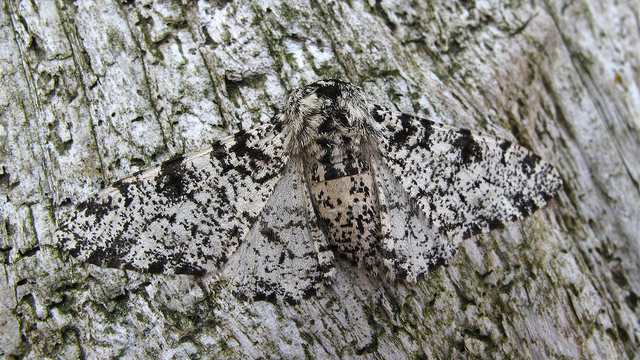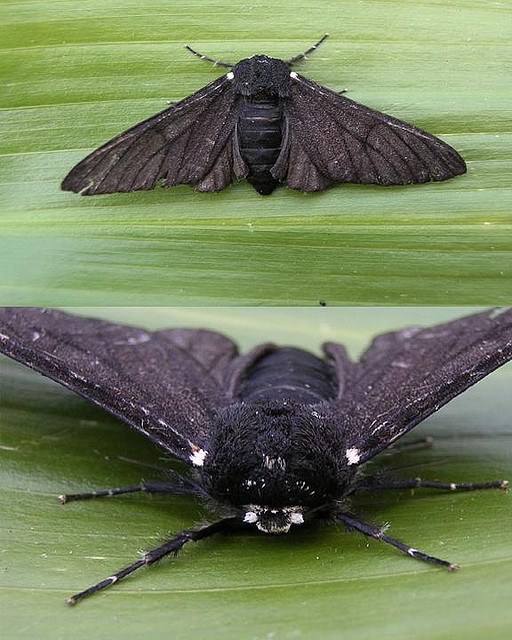In the children’s game of hide-and-seek, it doesn’t matter much whether you win or lose. In the animal kingdom, however, the stakes are significantly higher. If you’re found, you’re food.
And death is not just the end of the individual, it’s the end of a lineage. Organisms that die before they can reproduce deny their genes a road to the next generation. In this simple fact lies the engine of change. For example, genes that make a prey more camouflaged will end up increasing their reproductive success, whereas genes that make them more noticeable are not going to get very far. In this way, natural selection is driving prey to become better hiders, and predators to become better seekers.
Nowhere is this evolutionary race more evident than in the case of the peppered moth. This is a species of moth that is found all across England and Ireland. When people first studied them in the early 1800s, almost all the moths looked something like this:
As you can see (if you’re looking closely), the white and black speckles are effective camouflage. For ages, these moths have hidden on light colored trees and lichens. Over time, they have evolved this distinctive pattern to help them evade the notice of the birds that prey on them.
But just fifty years later, things were beginning to change. By the 1850s, moths of the same species had stumbled upon a new color. These new moths were called carbonaria after their carbon-black color, to distinguish them from their salt-and-pepper colored relatives with the dull name typica.
By the end of the nineteenth century, the change was drastic. In 1895, a study in Manchester showed that 95% of the peppered moths were now of the black type. So what was going here? What could cause such an incredible change in appearance in just a hundred years?

